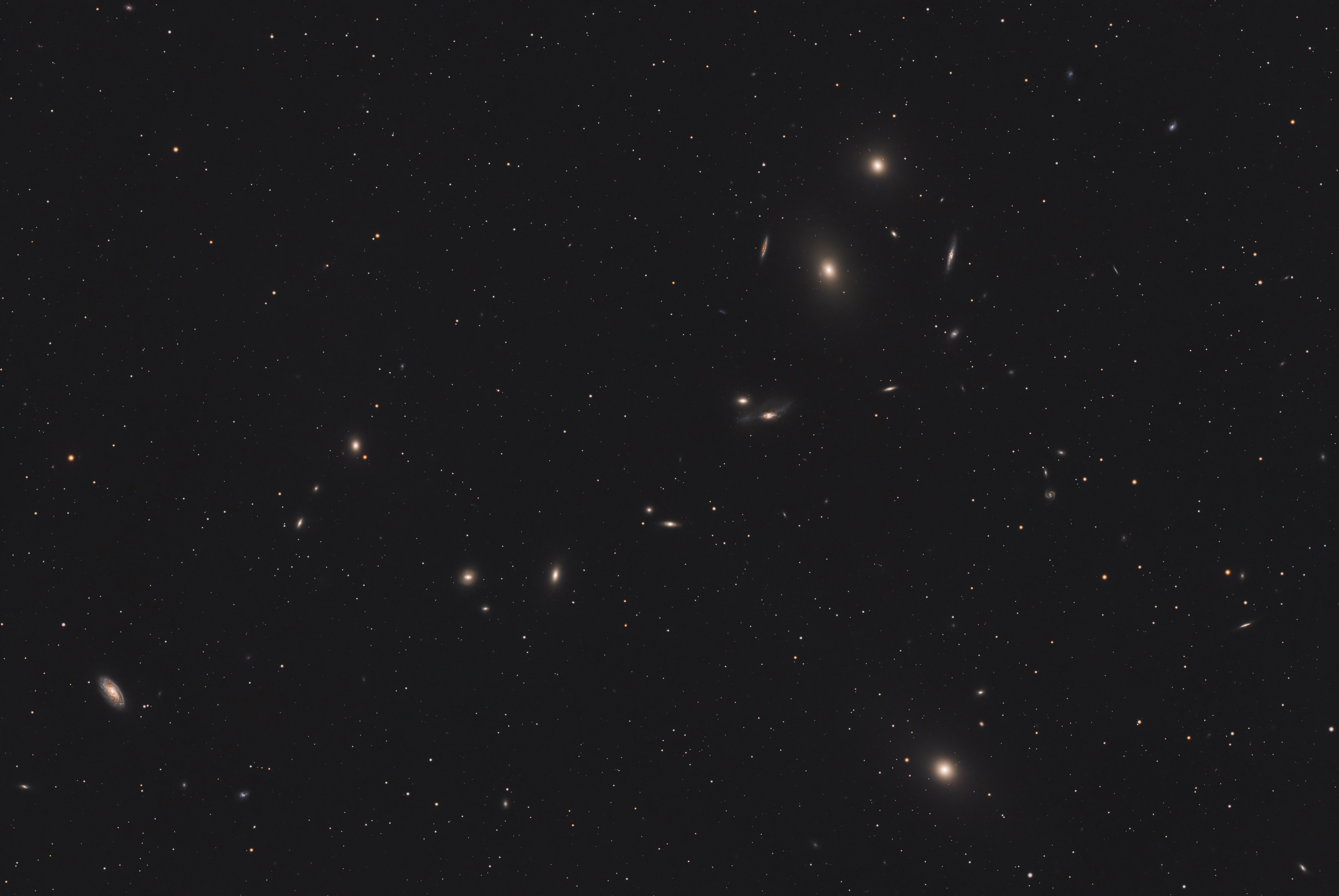
NGC 4319 and Markarian 205 are a pair of objects with a lot of lore and history. NGC 4319 is a spiral galaxy about 77 million light-years distant, while Markarian 205 is a quasar — an extremely luminous active galaxy — about 1 billion light-years away. We know those distances thanks to measurements of these objects’ redshifts. Due to the expansion of the universe, the farther a galaxy is from us, the faster it appears to recede from us, and the more stretched (or red) its light waves are when they reach us.
But in the 1970s, the astronomer Halton Arp became convinced that there was a light bridge connecting NGC 4319 and Markarian 205. He believed that Markarian 205 was originally the galactic core NGC 4319, and had been ejected from it. This would imply that the objects lay at the same distance, despite that the fact that their redshifts indicated Markarian 205 was over a dozen times more distant. If there was a true physical connection between the two objects, it would mean that measurements of distant galaxies based on their redshift were not reliable.
Arp’s assertions provoked a debate that raged for two decades. In the end, the Hubble Space Telescope played a key role in resolving the matter: While Markarian 205 does appear inside the outer spiral arms of NGC 4319, Hubble could also see that certain wavelengths of light from the quasar were being absorbed by NGC 4319, proving that it does indeed lie in the background.
Follow Astronomy magazine, the world’s best-selling astronomy magazine:
🌎 Website: https://astronomy.com
📖 Subscribe: http://subscribe.astronomy.com
📘 Facebook: https://www.facebook.com/AstronomyMagazine
📸 Instagram: https://instagram.com/astronomy.magazine
🐦 X/Twitter: https://twitter.com/AstronomyMag
Shop Celestron telescopes:
🔭 Website: https://celestron.com
Follow Dave Eicher:
📘 Facebook: https://www.facebook.com/davidjohneicher
📸 Instagram: https://instagram.com/eicher.david
🐦 X/Twitter: https://twitter.com/deicherstar









